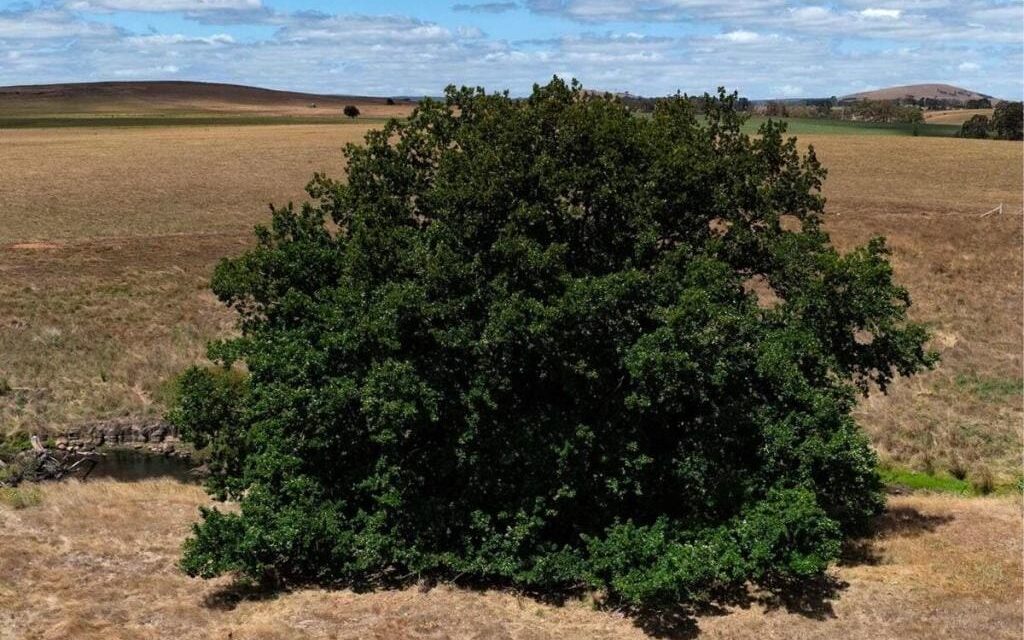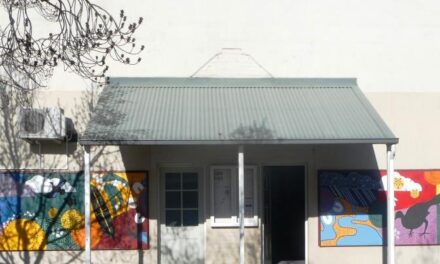The Algerian Oak (Quercus canariensis) in Kingston has been named the 2025 Victorian Tree of the Year, receiving more than 40 per cent of the public vote in the National Trust of Australia (Victoria) competition.
Estimated to be over 130 years old, the tree stands about 16 metres tall with a canopy spreading more than 30 metres. It grows on the only parcel of public land in Kingston and has become a much-loved local landmark.
The tree’s nomination and popular vote followed a strong community campaign to highlight concerns about its future. The oak stands in the proposed corridor of the Western Renewables Link (WRL), a major electricity transmission project designed to carry renewable energy from wind and solar farms in western Victoria to the state’s power grid near Melbourne.
The WRL, led by AusNet and supported by the Victorian Government, has been controversial since it was announced in 2019. The project’s 190-kilometre overhead power line route would pass through farming land and rural communities between Bulgana and Sydenham. Many landholders and local groups have raised environmental, agricultural, and landscape concerns, calling for the line to be placed underground or re-routed.
Supporters of the project argue that the WRL is essential to modernising Victoria’s electricity network and connecting renewable energy zones to demand centres. An independent environmental assessment is currently underway.
Community members say the Algerian Oak represents more than a single tree—it symbolises the broader struggle to balance environmental protection with infrastructure development. The tree’s removal, they argue, would not only destroy a historic specimen but could also affect nearby habitat along Birches Creek, which supports native vegetation, frogs, platypus and other wildlife.
Although the Tree of the Year title carries no legal protection, the National Trust says the award helps draw attention to the vulnerabilities of significant trees under current planning laws.
Justin Buckley, Executive Manager of Gardens and Landscapes at the National Trust, said that Victoria’s planning system often fails to protect trees, even when their significance is well documented. He welcomed recent government initiatives to strengthen canopy tree protections but said further action is needed to safeguard heritage trees across the state.
Kingston resident Jeremy Harper, who nominated the Algerian Oak, said the award recognised both the tree’s grandeur and the community’s commitment to preserving it. He noted that Kingston is already known for its historic Avenue of Honour and can now claim another state accolade.
The runner-up in this year’s competition was the “Tree of Knowledge,” a Tasmanian Blue Gum (Eucalyptus globulus ssp. globulus) planted in 1896 at Federation University in Mt Helen.
Since the National Trust established its Significant Tree Register in 1982, more than 30,000 trees across 1,500 sites have been documented, making it the most comprehensive record of significant trees in Victoria.
This article is based on a media release from the National Trust of Australia.





